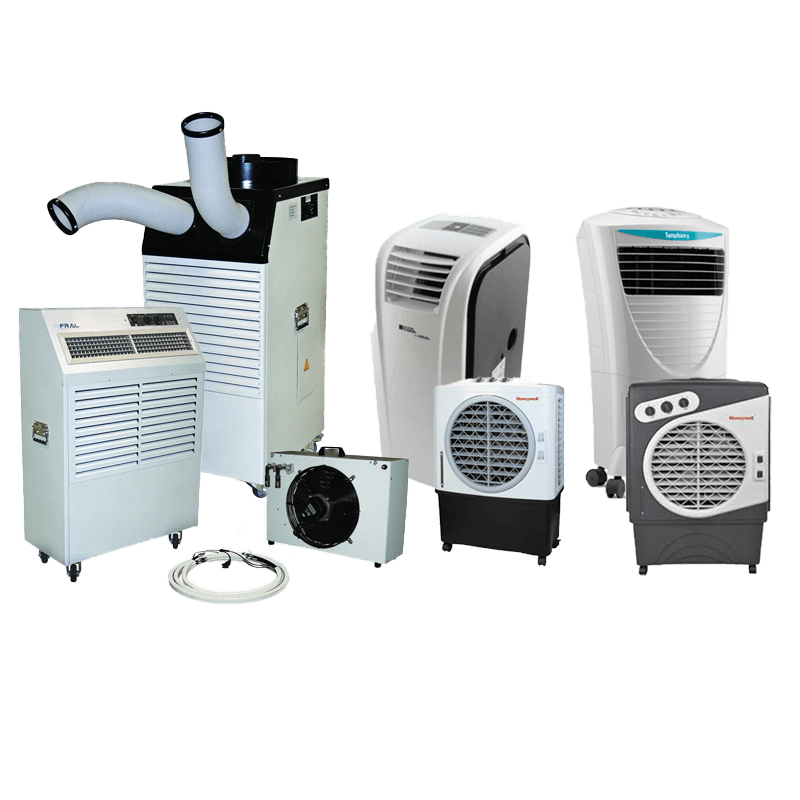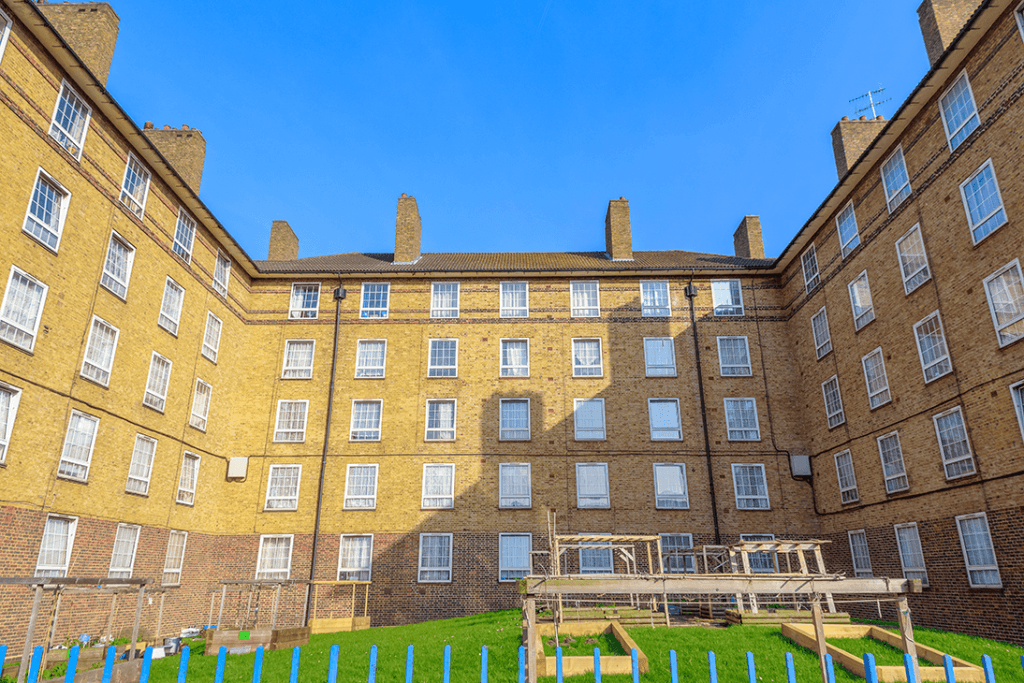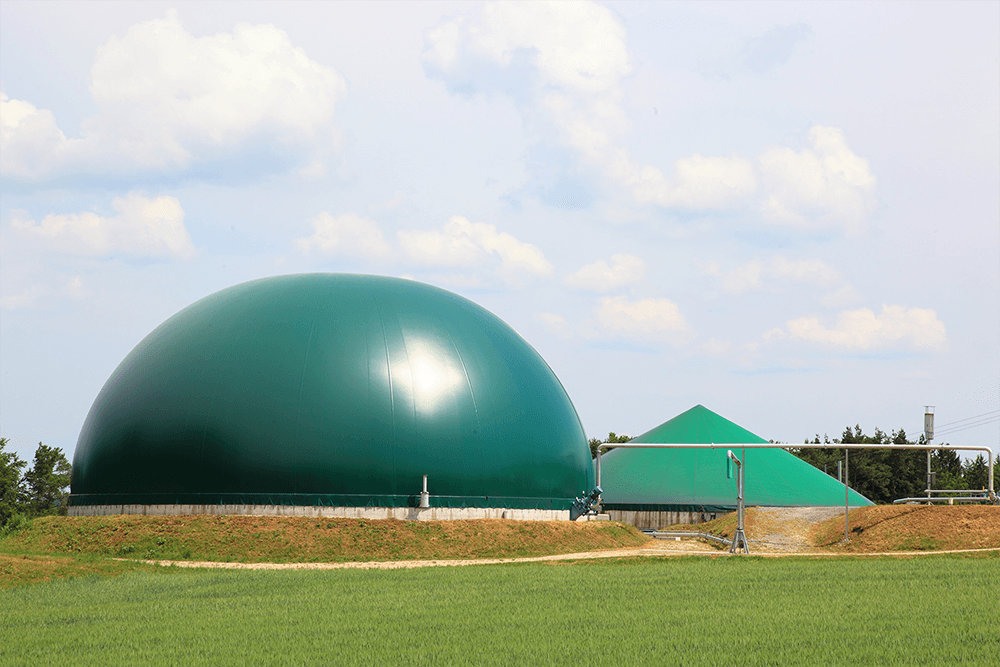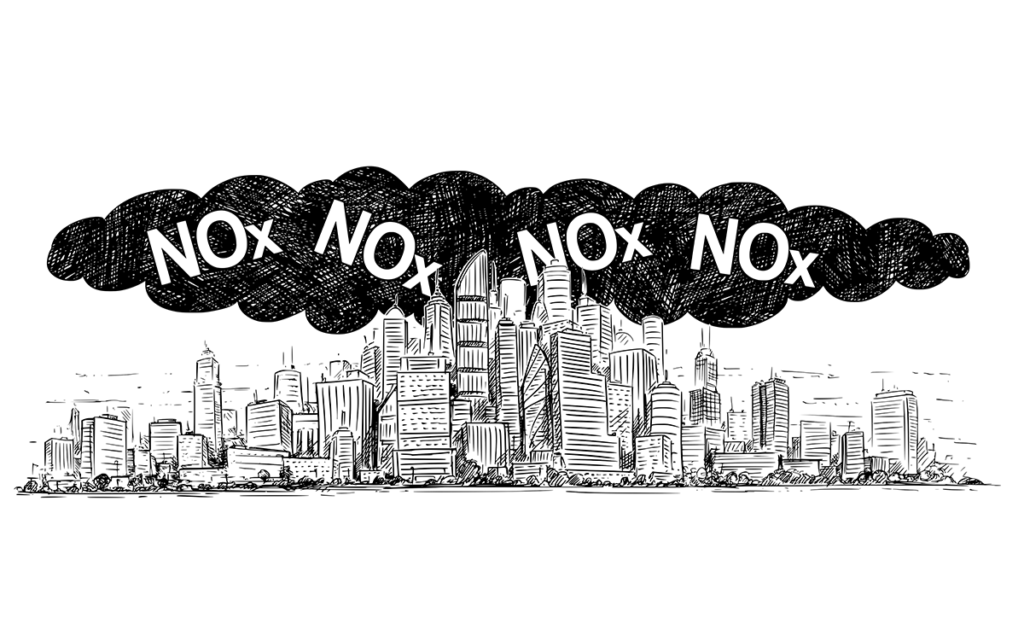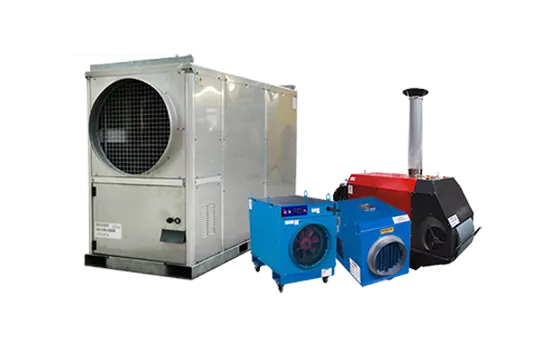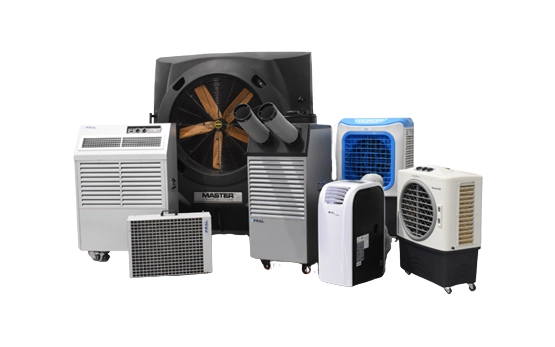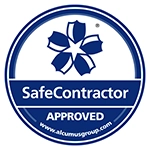You have been tasked with finding a temporary cooling solution for a building or premises. It sounds like a fairly straightforward task but there are some variables that you should consider within your decision making process.
In this blog post, we will cover as many of these considerations as possible, to help you make the right decision.
A great place to start is the two different types of portable cooling equipment you can choose from; Air Conditioning (also known as spot coolers) and Evaporative Coolers (also known as swamp coolers).
Air Conditioning (AC) or Spot Coolers
Air Conditioning (AC), often referred to as a spot cooler, works by removing warm air from inside your room or building and transferring it outside. Cool air is then pumped back into the building or room, reducing the temperature and cooling the area.
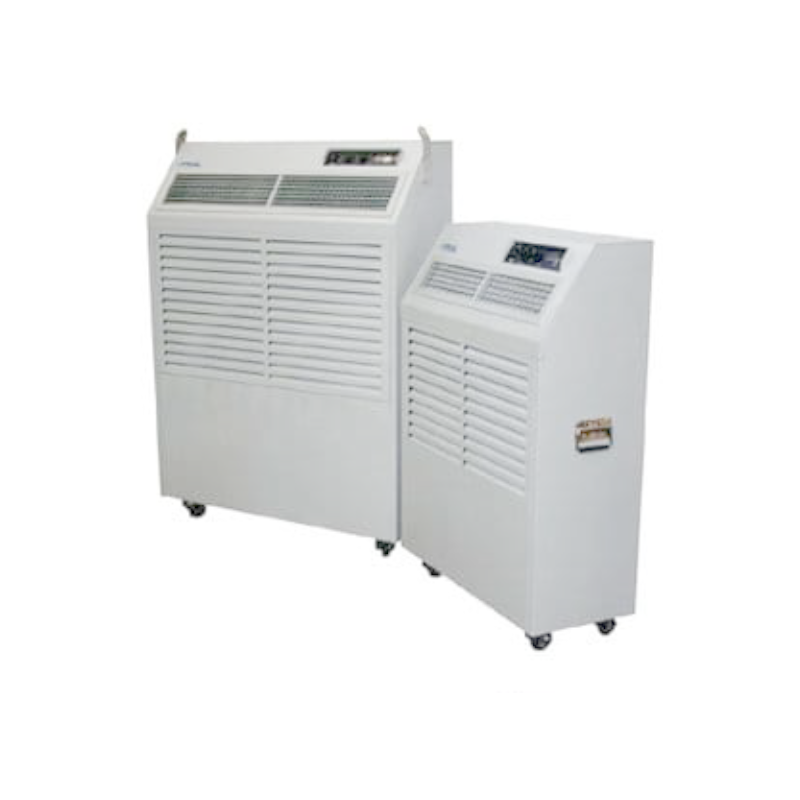
15kW AC Unit 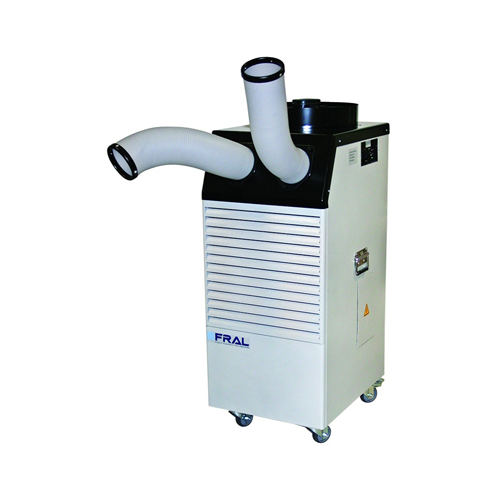
7.3kW AC Unit 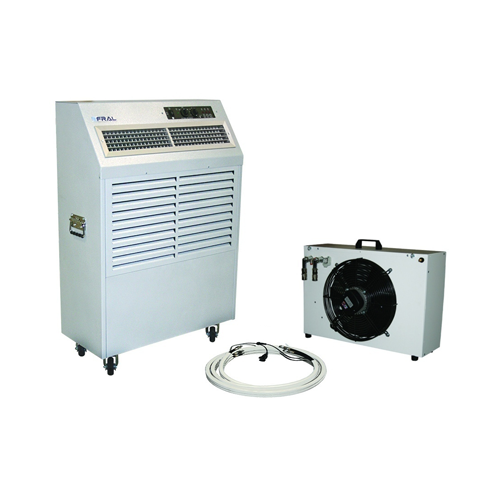
6.7kW AC Unit 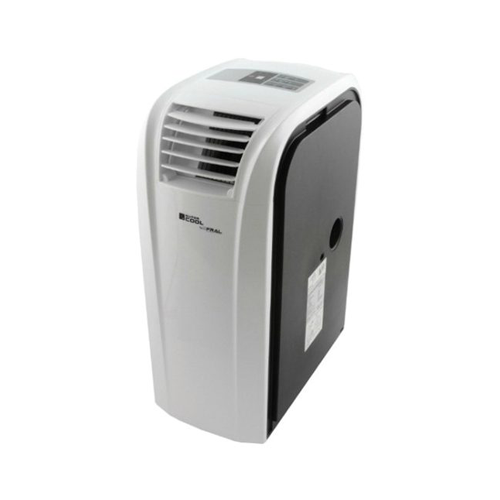
4.1kW AC Unit
Evaporative Coolers or Swamp Coolers
Put simply, evaporative coolers or swamp coolers as they are referred to, cool the surrounding air through the evaporation of water. They pass air over water saturated pads contained within the units, causing the water to evaporate. On this principle, evaporative coolers are much more effective in low-humidity environments. They are also much more energy efficient when compared to portable air conditioning units.
Other names used to describe Evaporative Coolers are: swamp box, desert cooler and wet air cooler.
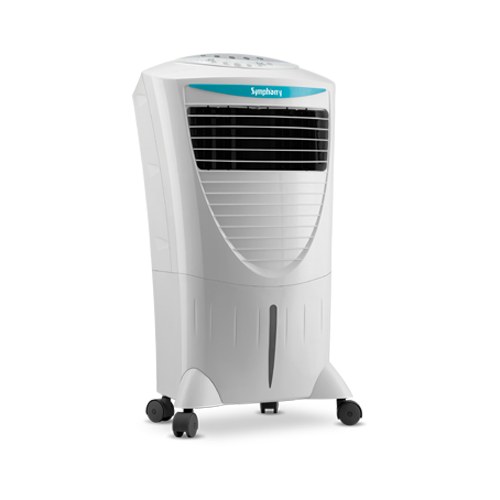
31L Evaporative Cooler 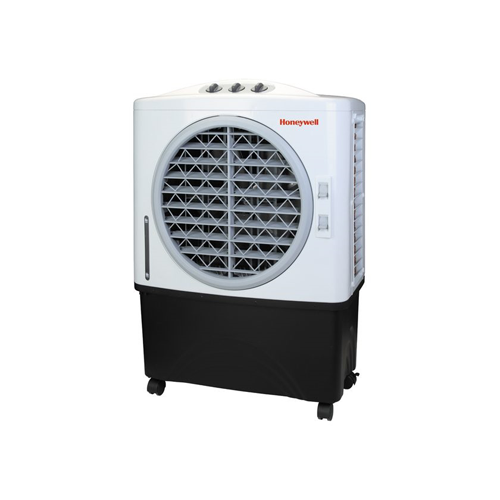
48L Honeywell Evaporative Cooler 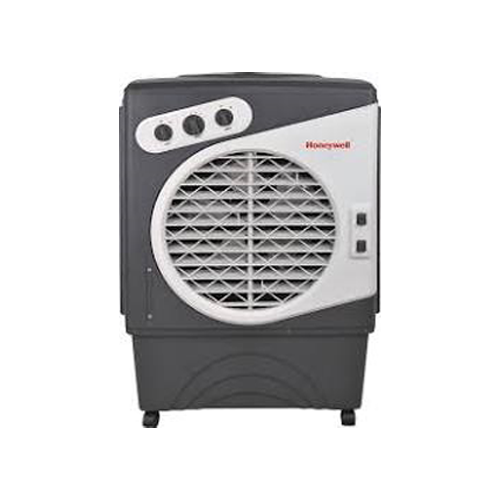
60L Honeywell Evaporative Cooler
Considerations
Area Size and Current and Desired Temperature
Understanding the size of the area which you are looking to cool is obviously important. We recommend and ask our clients to provide us with the length, width and height of the area that needs to be cooled. Amongst other variables, we use the dimensions of the space and the current/desired temperature (if known) to calculate the cooling load. The cooling load is the rate at which sensible and latent heat must be removed from the space to maintain a constant space dry-bulb air temperature and humidity.
Open/Closed Windows
Air conditioning units require a flue to disperse the warm area being extracted from the area being cooled, outside of the building. If the area which you wish to cool has no open/closed windows, it’s not possible to utilise a portable air conditioning unit to cool the area in question. This is because the flue that’s attached to the AC unit, has to be run through a window to disperse the warm air extracted to the outside area.
An evaporative cooler is therefore a preferred option in a scenario such as this.
Noise Levels
A question that often gets overlooked is whether or not the noise of the unit when operational should be taken into consideration. An AC unit with a high decibel (dB) could be an issue for the occupants of that office, especially where noise levels need to be kept to minimum.
In our range of air conditioning units, we include the noise level within the specifications of each unit. This can be found on each of the individual product pages throughout our website. The specification sheet itself can also be downloaded as PDF.
For larger office spaces, we often recommend hiring 1 or multiple 4.1kW Mini Spot Coolers, as the Noise output is far lower when compared to the higher capacity units.
The Age of the Building
Modern buildings are often better insulated and therefore retain the heat better than some older buildings. This isn’t always the case but the more you know about your building, including its age, the more considered your choice of cooling equipment will be.
Existing Equipment (Computers and Monitors)
Does the space you are looking to cool contain a large number of computers, screens and/or monitors? This type of equipment can omit heat, so it’s therefore important to factor this in when calculating your cooling load and the portable cooling equipment that you require.
For server rooms, we always recommend arranging a site survey with a cooling specialist prior to making any recommendations.
Conclusion
So whether your existing air conditioning system has failed, or you simply don’t have AC in your building, these considerations should put you on the right track.
If you need a temporary cooling solution, you can take a look at our range of AC units and Evaporative coolers here. You can also use our cooling calculator below.
If you have a temporary cooling requirement, call us today on 0800 464 7025.
